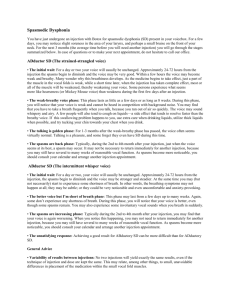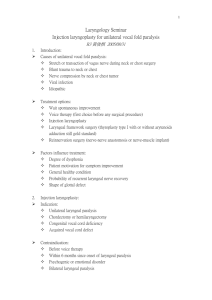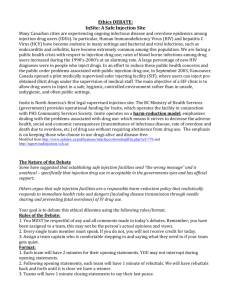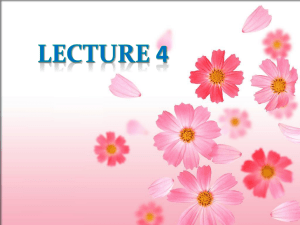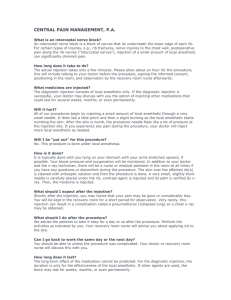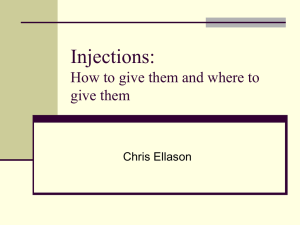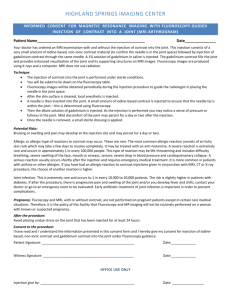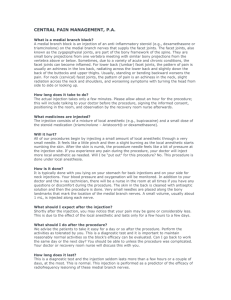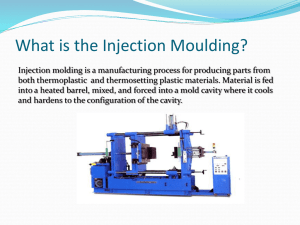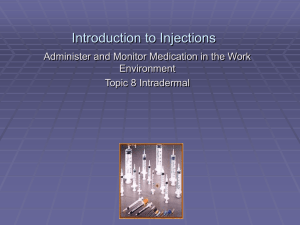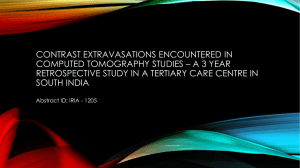Office Vocal Cord Injections: Applying bioengineered products to
advertisement
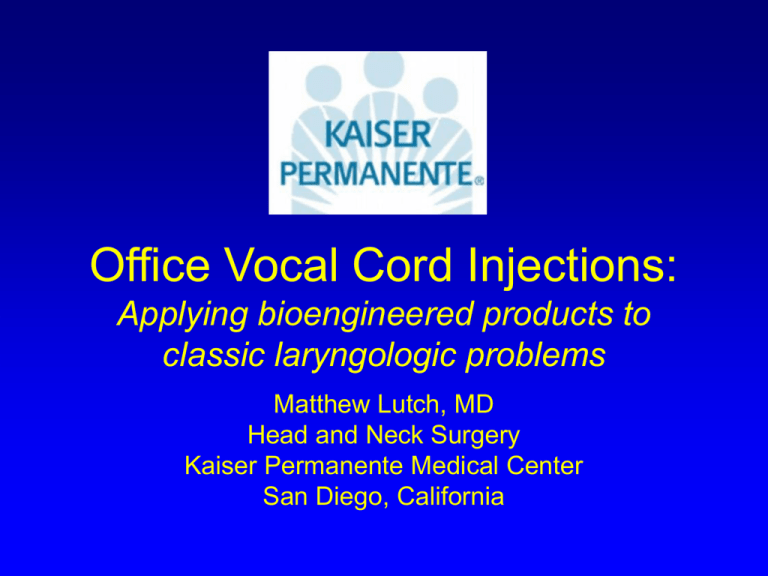
Office Vocal Cord Injections: Applying bioengineered products to classic laryngologic problems Matthew Lutch, MD Head and Neck Surgery Kaiser Permanente Medical Center San Diego, California Medialization Procedures • Terminology often unclear – Open vs endoscopic – Office-based vs operating room – Thyroplasty vs laryngoplasty – Injectable implants vs permanent implants • Implantable implants? – Laryngoplasty is catch-all • Thyroplasty reserved for open procedures • Injection laryngoplasty (IL)/vocal fold injection (VFI) Vocal Fold Injection • Classic Laryngologic Problems – Glottic insufficiency catches all • Vocal fold paralysis/paresis • Tissue loss (neoplasm/trauma) • Presbylarynx (subset) – Loss of superficial lamina propria – Sulcus vocalis Classics in VFI • Brünings, 1911 – paraffin • Arnold, 1963 – Teflon • All initially “office-based” – Awake, upright patients Manuel Garcia: Observations on the human voice. Proc Royal Soc London. 1855;7:397-410 Technique • Mirror guided surgery • General anesthesia - Standard of care ~1960 – Priest, et al. Direct laryngoscopy under general anesthesia. Trans Am Acad Opthamol Otolaryngol. 1960;64:639-48. – Scalco, et al. Microscopic suspension laryngoscopy. Ann Otol Rhinol Laryngol. 1960;69:1134-8. From Dedo, HH, Surgery of the Larynx and Trachea, 1990. What awake VFI offers • Shorter “down-time” • Decreased cost (RVUs!) • “Real-time” feedback – Addresses specific anatomic problem – More customized therapy – Multiple bioengineered injectable options – Open thyroplasty - OR mandated Disadvantages of VFI • • • • Preprocedure anxiety Intraprocedural gagging Cannot guarantee longevity of implant Precision of injection α patient comfort Injectable options • Duration, viscosity, inflammatory risk – Saline – Gelfoam – Restylane/Juvederm – Collagen – Fat – Artecoll/Teflon/Radiesse (CaHA) Why hyaluronic acid? • • • • • The “goo” molecule Carbohydrate polymer Extracellular matrix (15 grams/70 kg) Natural lubricant (synovial fluid) Cross-linking increases longevity NO COMMERCIAL DISCLOSURES Juvederm Ultra series • • • • • 34 patients 4 required repeat injection x 1 1 required repeat injection x 2 5 bilateral injectees 45 total injections Patient population GLOTTIC INSUFFICIENCY CATCHES ALL… • • • • • • • • • • Idiopathic -12 Lung cancer – 4 Thyroid cancer – 3 Esophageal cancer 2 Metastatic breast - 2 Presbylarynx – 5 Chondrosarcoma – 1 Jugular foramen schwannoma – 1 Carotid endarterectomy – 3 Cricoarytenoid joint fixation - 1 Awake approaches • Real time voice/visual feedback • Transoral* – Duplicates approach of direct laryngoscopy – Difficult in the gagging patient • Percutaneous – Transcricothyroid – Transthyrohyoid – Requires MD or SLP to drive scope – Optimal in gagging patient Technique of transoral injection • Base of tongue directly topicalized – Cetacaine – Methemoglobinemia • Atomized 4% lidocaine treatment • Direct glottic topicalization Video: Topical Being Dripped Directly into glottis Case #1 • 55 year old man s/p open resection of chondrosarcoma • Substantial glottic insuffiency secondary to loss of paraglottic tissue and RLN sacrifice Preinjection stroboscopy film 1A Injection film 1B Postinjection (6m) stroboscopy 1C Case #2 • 79 year-old with dysphonia after left carotid endarterectomy • Left vocal fold paralysis and left sulcus vocalis deformity • Injection addresses both RW2A – preinjection strobe RW2B – injection/multiple passes RW2C – postinjection strobe Case #3 • 70 year old jewelry salesman • Breathy dysphonia s/p CABG • Intubated with 8.5 endotracheal tube JHpresby3A: preinjection strobe JHpresby3B: bilateral vfi JHpresby3C: postinjection strobe Followup • 1 to 17 months • 5 patients required repeat injection • 1 underwent open thyroplasty Summary • • • • • Rejuvenating time-honored approaches More options for patients Decreased downtime Minimal risk Followup driven by patients:
